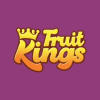

Blackjack
Blackjack – the original card game of ‘21’ or as it was known in 16th century France ‘vingt-et-un’. Blackjack is very popular and the rules of play are fairly easy to pick up, even for beginners. As suggested by the ‘21’ alternative name, this card game aims to end up with a hand of cards adding up to 21 or as close as you can get without going over.
Blackjack has elements of both luck and an element of understanding probability and the number of each type of card in a pack. Played with a full deck of cards and also traditionally played using a semi-circular card table with the dealer at the back. Online blackjack may even be played in a live casino.
Players gather around a table to play against the dealer in the quest for a hand of 21. Traditionally, picture cards (Jacks, Queens, and Kings) are valued at 10. An Ace can hold a value of 1 or 11 depending on what else you have in your hand, you choose. All other numbered cards carry their face value as points. For example, the two of spades are valued at 2, as is the two of diamonds, and so on. Ultimately, the aim of the game is for players to score a total card number value of 21, or as close to this as possible. Any player who scores over 21 is declared a ‘bust’.
Once two cards each have been dealt to players and dealer, players may choose to:
- Stand – stick with the first cards
- Hit – request more cards to get closer to 21 until you choose to stand
- Double Down – double your initial betting stake and get one more card
- Split – if you have 2 cards of equal value you can create 2 hands to play and make a second bet
Surrender – fold and get half your initial bet returned
Blackjack occurs if a player gets 21 on the first hand – an Ace plus a card worth 10 points. This is a win unless the dealer also gets a blackjack hand
Mastering the Timeless Game of 21: A Comprehensive Guide to Blackjack
Be it the high-stakes private rooms of Monte Carlo’s elite casinos or the raucous ambiance of the Las Vegas Strip, one game has reigned as the undisputed “King of Table Games” throughout the gambling world for centuries. Blackjack’s perfect blend of simplistic rules and gameplay balanced with ample opportunities for skill and strategic decision-making has cemented its place as not only one of the most widely played casino games ever but a revered piece of gaming culture in its own right.
While luck will always play a role in any game based around dealt cards, blackjack crucially offers plentiful spaces for players to legally “gain an edge” over the house by making disciplined plays according to statistical norms. That unique dynamic of codified strategy and “beatable odds” has helped establish Blackjack’s esteemed position on casino floors across the globe.
With such mass appeal for high-rollers, advantage gamers, and casual fun-seekers alike, it’s no surprise that blackjack’s popularity has extended to online and mobile platforms as well. Apps and websites for virtual blackjack number in the thousands, with many top gambling operators going to extensive lengths to recreate the in-person table experience through live dealer games with real human dealers and casino equipment.
Whether you’ve been regularly hitting the blackjack tables for years or are completely new to the game, join us as we explore everything there is to know about this time-honored classic. From gameplay rules and strategically optimal decision-making to side bet variations, game histories, famous lore/legends, and much more, we’ll provide the ultimate resource for all things blackjack.
The Basics of Blackjack Gameplay and Objective While perhaps slightly more involved than some other traditional table games, blackjack remains remarkably straightforward at its core. The overall goal is simple – achieve a hand value that is higher than the dealer’s hand without going over 21, or get as close to 21 as possible without busting.
Players compete against only the dealer, not others at the table, in trying to build the best hand possible from the cards they are initially dealt as well as additional cards requested. Face cards (jacks, queens, and kings) are all worth 10 points, while numbered cards maintain their pip values (e.g. a 5 of hearts is worth 5 points). Aces can count as either 1 or 11 points based on which value is more advantageous for making the best hand.
Before any cards are dealt, players must make an initial bet on the marked spot in front of their spot at the table. Professional dealers, who must follow strict rules dictated by the specific blackjack variant being played, will then deal out cards to players and themselves following specific dealing procedures. Usually, a standard 52-card deck of shuffled cards is used, though in certain games 4-8 decks may get shuffled together via shoe games or continuous shuffling machines.
The optimal play has players receiving one card face-up along with the dealer also receiving their first card face-up. A second face-down hole card is dealt to both the dealer and players to complete the initial hands. In the 21st century, it’s now standard for “holes” to be dealt face-up as well in the interest of fairness and transparency.
Once all hands are dealt, players work in turn to evaluate their initial two cards to build a hand as close as possible to the magic sum of 21 without exceeding it (known as a “bust”). On each turn, players have a few possible action choices:
- Hit: Take another card from the dealer to try and improve their hand
- Stand: Take no more cards and hold what they’ve been dealt
- Double Down: Double their initial bet, take one and only one more card
- Split: If dealt a pair, separate them into two hands by doubling the bet
- Take Insurance: Mitigate risk if the dealer has a blackjack by betting more
The dealer must follow strict predetermined rules for taking hits based on their up-card and overall hand value, whereas players have more strategic flexibility. The key for players is to exercise disciplined decision-making that capitalizes on statistical norms and house rules while avoiding excessive risks of busting.
After all players have taken action to build their hands, it’s the dealer’s turn. Typically the dealer must draw to 16 and stand on 17 or better, though specific rules may vary slightly based on the blackjack rules and house policies.
Whoever ends up closest to 21 without exceeding it wins even money on their bet, resulting in a push if the player and dealer tie with the same value. If the dealer busts with a hand over 21, then all players who are still standing win automatically.
Blackjack (getting a two-card total of 21 exactly) traditionally pays out at 3:2 or 6:5 odds if the player beats the dealer’s hand. Insurance side bets pay 2:1 if the dealer ends up having a blackjack, while players lose their original bet. These core rules and objectives apply across all blackjack variants.
Mastering Optimal Blackjack Strategy for the Best Odds
At first glance, the rules and objectives of blackjack seem quite simple. However, a seemingly infinite number of decision points and potential outcomes emerge once cards get dealt and gameplay progresses. Herein lies the true depth and complexity that allows blackjack to offer tremendous strategic depth and opportunities for employing mathematical principles to overcome the house edge.
While blindly playing hunches or “going with your gut” may seem like viable options for more luck-based gambling games like slots or roulette, that approach is a surefire way to get outright crushed over any extended blackjack sessions. Instead, disciplined players look to proven statistical norms and utilize codified “basic strategy” to maximize their expected values.
Basic strategy refers to the mathematically calculated list of optimal plays and decisions for every possible situation that may arise during a blackjack round. This accounts for factors like player/dealer starting hand values, number of decks used, rules on dealer hits, double-down allowances, and more. Perfectly executing basic strategy reduces the house edge down to as little as 0.5% for player-friendly blackjack games.
While the specifics of basic strategy would require pages upon pages to cover, some of the most common strategic tenets for players to internalise include:
- Always split aces and 8’s, never 5’s or 10-value cards
- Double down on 11s unless the dealer is showing an ace
- Never take insurance, it’s a sucker bet favoring the house
- Stand on any hand valued 17 or higher unless the dealer is showing an ace
- Hit hands 12-16 if the dealer is showing 7 or higher
- Always assume the dealer’s face-down second card is a 10
Even for novice players still working to fully memorize and competently apply blackjack basic strategy, developing certain fundamental habits can go a long way towards narrowing the house edge. Taking insurance bets is almost universally a losing move, as is splitting 10-value cards or 5’s. Learning proper doubling down and split pair practices are easy ways to start boosting the expected value.
It’s worth noting that while basic strategy significantly reduces the casino’s inherent math edge, it doesn’t necessarily guarantee long-term profits or equate to having a true “advantage” over the house. That level of skill requires studying and incorporating advanced deviations like composition-dependent strategy, shuffle tracking, cutting techniques, and other “advantage gambling” tactics.









